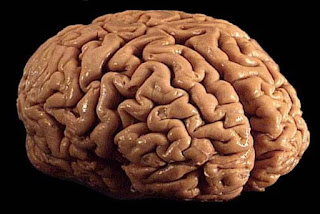SCIENTIST WILL ALTER MEMORIES OF TRAUMA AND RESTORE LOST MEMORIES BY RNA INJECTION
prof .DRRAM,HIV /AIDS,HEPATITIS ,SEX DISEASES & WEAKNESS expert,New Delhi,India, profdrram@gmail.com,+917838059592,+919832025033,ON WHATSAPP
 Medical scientist are doing that kind of inventions which were dream till today,one of them is to restore our lost memory by injection of a drug and beside it we can also forget some memory as painful memory of a trauma. UCLA scientist report they have transferred a memory from one marine snail to another, creating an artificial memory, by injecting RNA from one to another. This research could lead to new ways to lessen the trauma of painful memories with RNA and to restore lost memories.
Medical scientist are doing that kind of inventions which were dream till today,one of them is to restore our lost memory by injection of a drug and beside it we can also forget some memory as painful memory of a trauma. UCLA scientist report they have transferred a memory from one marine snail to another, creating an artificial memory, by injecting RNA from one to another. This research could lead to new ways to lessen the trauma of painful memories with RNA and to restore lost memories.
"I think in the not-too-distant future, we could potentially use RNA to ameliorate the effects of Alzheimer's disease or post-traumatic stress disorder," said David Glanzman, senior author of the study and a UCLA professor of integrative biology and physiology and of neurobiology. The team's research is published May 14 in eNeuro, the online journal of the Society for Neuroscience.
RNA, or ribonucleic acid, has been widely known as a cellular messenger that makes proteins and carries out DNA's instructions to other parts of the cell. It is now understood to have other important functions besides protein coding, including regulation of a variety of cellular processes involved in development and disease.
The researchers gave mild electric shocks to the tails of a species of marine snail called Aplysia. The snails received five tail shocks, one every 20 minutes, and then five more 24 hours later. The shocks enhance the snail's defensive withdrawal reflex, a response it displays for protection from potential harm. When the researchers subsequently tapped the snails, they found those that had been given the shocks displayed a defensive contraction that lasted an average of 50 seconds, a simple type of learning known as "sensitization." Those that had not been given the shocks contracted for only about one second.
The life scientists extracted RNA from the nervous systems of marine snails that received the tail shocks the day after the second series of shocks, and also from marine snails that did not receive any shocks. Then the RNA from the first (sensitized) group was injected into seven marine snails that had not received any shocks, and the RNA from the second group was injected into a control group of seven other snails that also had not received any shocks.
Remarkably, the scientists found that the seven that received the RNA from snails that were given the shocks behaved as if they themselves had received the tail shocks: They displayed a defensive contraction that lasted an average of about 40 seconds."It's as though we transferred the memory," said Glanzman, who is also a member of UCLA's Brain Research Institute.As expected, the control group of snails did not display the lengthy contraction.
Next, the researchers added RNA to Petri dishes containing neurons extracted from different snails that did not receive shocks. Some dishes had RNA from marine snails that had been given electric tail shocks, and some dishes contained RNA from snails that had not been given shocks. Some of the dishes contained sensory neurons, and others contained motor neurons, which in the snail are responsible for the reflex.
When a marine snail is given electric tail shocks, its sensory neurons become more excitable. Interestingly, the researchers discovered, adding RNA from the snails that had been given shocks also produced increased excitability in sensory neurons in a Petri dish; it did not do so in motor neurons. Adding RNA from a marine snail that was not given the tail shocks did not produce this increased excitability in sensory neurons.
In the field of neuroscience, it has long been thought that memories are stored in synapses. (Each neuron has several thousand synapses.) Glanzman holds a different view, believing that memories are stored in the nucleus of neurons."If memories were stored at synapses, there is no way our experiment would have worked," said Glanzman, who added that the marine snail is an excellent model for studying the brain and memory.
In the future, Glanzman said, it is possible that RNA can be used to awaken and restore memories that have gone dormant in the early stages of Alzheimer's disease. He and his colleagues published research in the journal eLife in 2014 indicating that lost memories can be restored.There are many kinds of RNA, and in future research, Glanzman wants to identify the types of RNA that can be used to transfer memories
- Kidney stones universally present hazard in north india,dillution by water prevent it
- Steroid and placebo effect equally for mild persisting asthma with low sputum eosinophils
- Government wants to fix public healthcare staff shortages with ayush docs: will it work?
- Plea in hc for payment of salaries of edmc, north mcd teachers and doctors
- 7 indian pharma companies named in us lawsuit over inflating generic drug prices
- Woman in up dies after explosion in her mouth during treatment,what is diagnosis?
- Woman in up dies after explosion in her mouth during treatment,what is diagnosis?
- Woman in up dies after explosion in her mouth during treatment,what is diagnosis?
- Air pollution ! mothers organising rally in london,anaesthetist choosing gas,will india follow?
- Cardiac arrest is always not sudden as understood -a study

 Comments (
Comments ( Category (
Category ( Views (
Views (